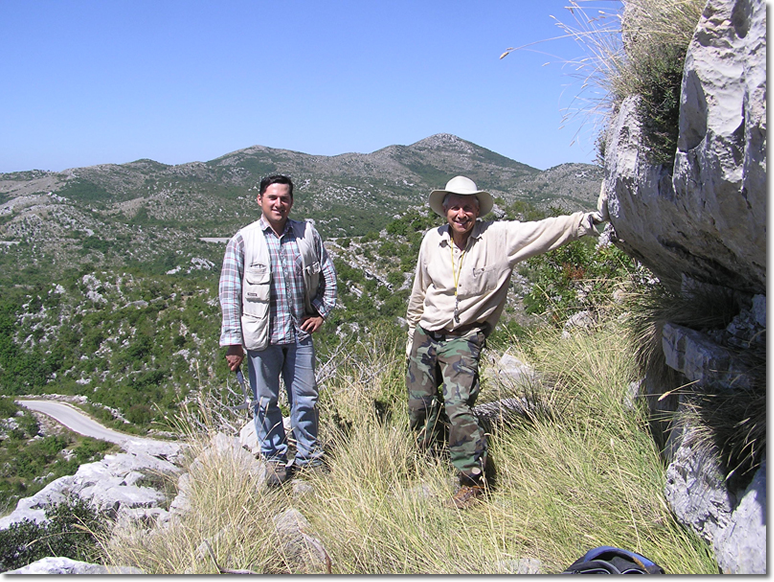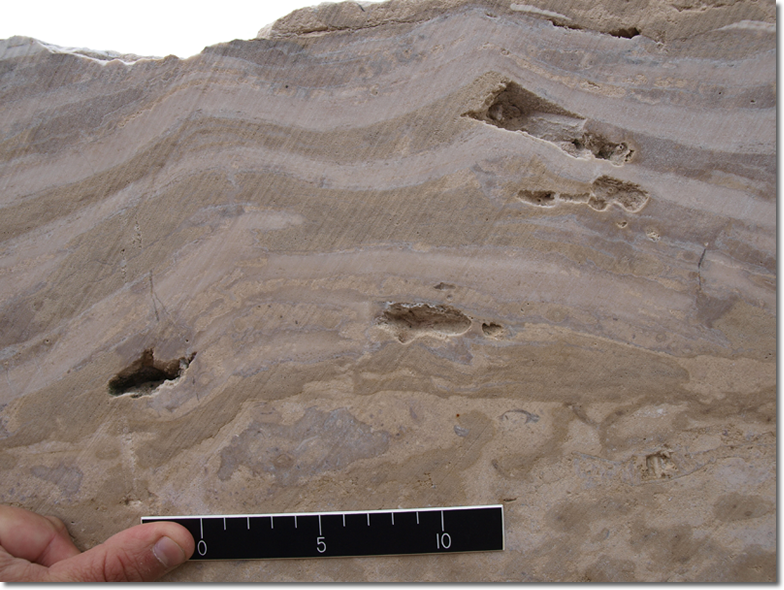Research
A central emphasis in my research plan is directed at the use of microfossils and the sedimentary record coupled with the integration of stratigraphic analysis, modeling, isotopic approaches and spectral analysis to track the evolution of climates and oceans.
The present “icehouse” world cannot tell us how the Earth would function under “greenhouse” conditions. Also, recent work suggests that a significant part of earth history previously considered ice-free was neither true greenhouse nor icehouse, but in-between (transitional), with some polar ice but not large ice sheets. The stacking patterns of sediments on Phanerozoic carbonate platforms record a 540 m.y. history of climate-induced sea-level changes, capable of resolving the distinctive signatures of greenhouse, transitional and icehouse conditions. They also provide a window into how modern tropical platforms might respond to global warming and cooling.
Current Projects
Greenhouse and Transitional Climates in 50 m.y. Carbonate Record of the Late Jurassic-Early Cretaceous Dinaric Platform, Croatia (with Fred Read, Virginia Tech) – funded by the NSF and the Ministry of Science, Croatia
 |
||
| Antun Husinec and Fred Read during fieldwork near Dubrovnik, southern Croatia |
On-going research in Croatia, sponsored both by the U.S. National Science Foundation and the Croatian Ministry of Science, uses Adriatic platform of Croatia, supplemented by published and ongoing studies in the Middle East and elsewhere, to evaluate whether the >50 m.y. long Late Jurassic-Early Cretaceous interval, originally considered to be greenhouse, has intervals recording moderate amplitude glacioeustasy implying some high-latitude ice. Besides being a window into a generally hot time in the Earth's history, the interval is also important because it was the time when the supergiant carbonate reservoirs of the Middle East developed.
High Resolution Sequence Stratigraphy of Ordovician Red River Formation, Williston Basin, North Dakota – funded by the American Chemical Society Petroleum Research Fund
 |
|
| Polished slab showing side view of stromatoporoid, Red River Formation, Manitoba |
We are testing the hypothesis that the well documented 2nd- and 3rd-order sea level changes between the Edenian-Richmondian have controlled sequence development and stackup patterns of reservoir facies in Williston Basin, North Dakota and that sequences and reservoir facies are not simple shallowing-upward units, but are complicated by parasequence development related to moderate amplitutude, high-frequency eustasy typical of this time period in North America. We are also testing if the sedimentary rocks contain sedimentological and geochemical proxies of local and global events affecting the platform, as well as evidence for local climate. This is one of the first studies in the Williston Basin to specifically use parasequence stacking patterns, coupled with C-isotope stratigraphy, to evaluate how the sequence stratigraphy and stacking of the carbonate-evaporite facies and reservoir units of the Red River Formation relate to the well documented later Ordovician 2nd- and 3rd-order sea level changes, transitional climates, and Williston Basin tectonics.
Other Research Interests
- Siliciclastic microbialites, Ordovician, northern New York
- Dolomite diagenesis, Ordovician, North Dakota
- Modern carbonate depositional environments, Bahamas
- Jurassic-Cretaceous benthic foraminifera and calcareous algae, Croatia
Research Grants
- American Chemical Society (Petroleum Research Fund), Research Grant PRF# 49435-UNI8 – High Resolution Sequence Stratigraphy of Ordovician Red River Formation, Williston Basin, North Dakota; P.I.: A. Husinec; 6/1/09-8/31/11
- National Science Foundation (Geology/Paleontology Program), Research Grant EAR 0639523 – Joint U.S.-Croatian Cooperative Research Project: Greenhouse and Transitional Climates in 50 m.y. Carbonate Record of the Late Jurassic-Early Cretaceous Dinaric Platform, Croatia; P.I.: J.F. Read, Croatian co-P.I.: A. Husinec; 4/1/07-3/31/12
- Ministry of Science, Republic of Croatia (Geosciences Program), Research Grant 181-1953068-0241 - Sedimentary Record of Jurassic-Cretaceous Climatic Changes in Karst Dinarides; P.I.: A. Husinec; 2/1/07-2/1/12
- U.S. State Department (Fulbright Program), Research Grant 68428172 - Global Climate Change During Tithonian (150Ma) to Cenomanian (94Ma): Adriatic Carbonate Platform’s Response; P.I.: A. Husinec; 09/04-07/05
- Ministry of Science, Republic of Croatia (Geological Map of Croatia Program), Research Grant 0181001-05 - Geological Map of Lastovo Island; P.I.: A. Husinec; 05/01-06/04
- Ministry of Science, Republic of Croatia (Geological Map of Croatia Program), Research Grant 0181-0101 - Geological Map of Mljet Island; P.I.: A. Husinec; 05/99-06/02
Research Equipment Grants
- National Science Foundation (Major Research Instrumentation), Grant EAR-0923398, Acquisition of an Electron Scanning Microscope for Multidisciplinary Research, Research Training and Undergraduate Education; P.I.: J. Chiarenzelli; Co-P.I.s: J.M. Erickson, J.A. Erlichman, A. Husinec, and C.L. Jahncke
- George I. Alden Trust, Science Facilities Equipment Project: X-ray diffraction (XRD) system and an x-ray fluorescence (XRF) system for use by St. Lawrence Departments of Geology, Physics, and Chemistry
